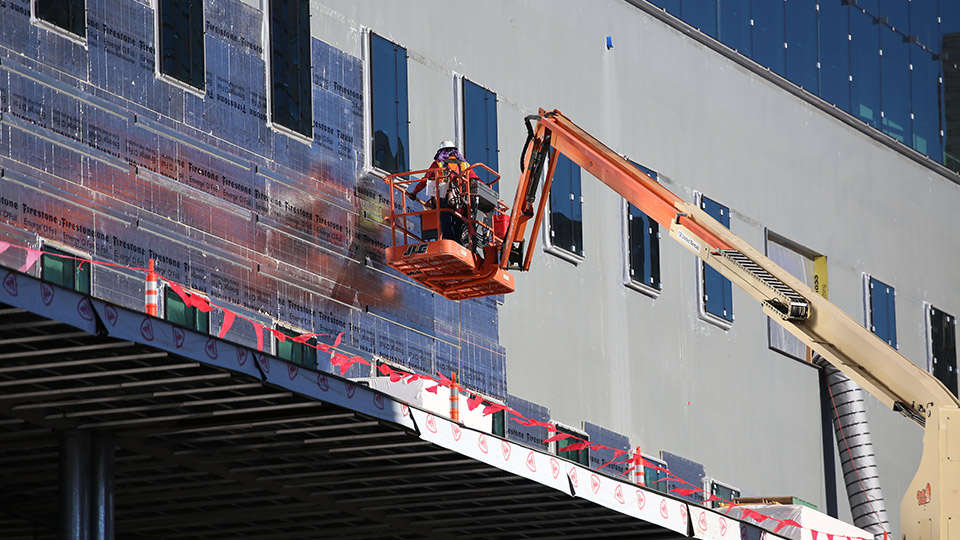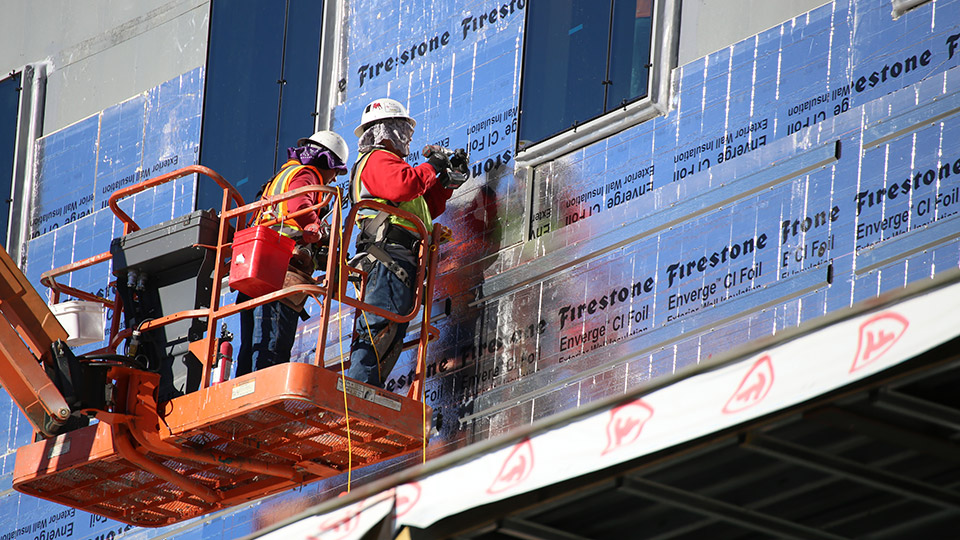
Contractors install a Firestone Building Products Enverge Cavity Wall insulation system at the University of Colorado’s new Academic Building in Denver.

A Firestone Building Products Enverge Cavity Wall insulation system was selected for the University of Colorado’s Academic Building in Denver because of its flexibility, ease of installation, dimensional stability and significant energy savings.